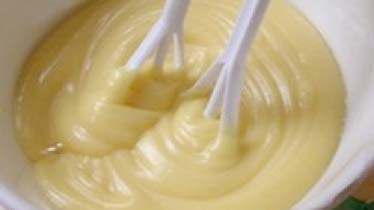You might think from reading Nanooze that nanotechnology is something that was just invented. Not really. The idea of making things at the nanometer scale is not new, in fact people have been making nanoscale stuff for a long time. Even before they knew that there were things that were too small to see.
Even before they knew that there were things that were too small to see. Whipping up different types of ingredients to make complex mixtures that do some neat things is a pretty common practice. Such as? Well something as familiar as mayonnaise taste great because of its physical properties and the nanoscale interactions between the eggs, oil and water.
Mayonnaise was whipped up by the chef of the Duc de Richelieu in 1756, to celebrate the Duc’s victory over the British at the port of Mahon—someplace that was the capital of Minorca in the Balearic Islands. What makes mayonnaise taste great has to do with things that are too small to see. But if you look at mayonnaise with a powerful microscope you can see the that the lipids and proteins which are part of something called an emulsion and are all arranged into little droplets that are only a few hundred nanometers in size. About a thousand times smaller than the width of a single hair. So mayonnaise does not taste like eggs, oil or water. It has a creamy flavor and is very smooth. While the chef of the Duc de Richelieu whipped up mayonnaise to please his boss, it is the nanostructure and nanotechnology that contributes to the taste and texture. Want to learn some more? Check out Earth and Sky.

